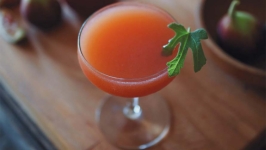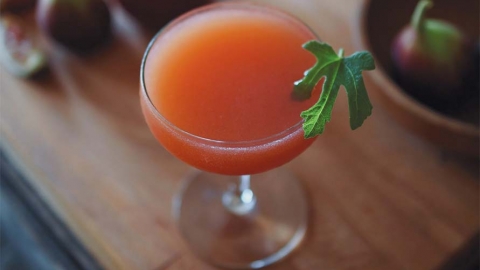Foraging for Figs
Foraging, I have learned, carries certain risks.
Humans have foraged for food since time immemorial. But foraging has recently experienced a renewal in public interest. Unlike our ancestors, we are not foraging for survival, but rather for the exploration of flavor and the opportunity to connect with nature. However, certain things are radically different for modern-day gatherers. One of the many factors we need to keep in mind while foraging is land ownership. When I spot food growing on someone’s home property, I’ll knock on the door or leave a note asking permission to harvest it. I’ve had good success over the years and have built relationships with several families who I now return to annually to pick things like ramps, fiddlehead ferns, sour cherries and chanterelle mushrooms. That being said, if I’m foraging on common ground, say a parking lot, public park or the woods, I will proceed without permission, making sure to harvest responsibly. It’s not a perfect system.
A few years ago, I was exploring the new neighborhood where we had just moved, when I noticed a mangled, sprawling fig tree growing over the curb where our street dead ends into a four-lane highway. The building looked like a former residence that had been converted into a commercial office for a construction company and limo business, which made me think that the tree was a relic from a past owner. After a week of driving by to check on the tree, I noticed no one had picked any, so I decided to knock on the door to ask if I could pick the fruit, but no one answered. I thought about it for a few minutes, before ultimately deciding that it was safe to pick some figs for home consumption.
I returned later that afternoon with my wife. Within a few minutes, our hands (and bellies) were full of perfectly ripe figs. Suddenly, a car literally screeched up and out jumped a visibly angry elderly man and his son. The father stormed toward me and shouted through a thick Italian accent, “Whaddya doin’ with my figs?”
I stammered something—how, because the figs were outside a construction business, I didn’t think anyone would pick them and I didn’t want them to go to waste. He replied, with a straight face, “Buddy, they don’t go to waste.” His son echoed this sentiment like a parrot, “They don’t go to waste.” The dad stood quietly, deciding what he should do with us. He looked at my loot, looked at Katie’s, then turned back to me and said, “Give me your figs.” Then, he looked at Katie and with a level of charm that only an old Italian man could have, patted her on the arm, smiled and said, “You can keep your figs, dear.” Bruno was his name, and he played me like a fiddle right in front of my wife.
It’s been a few years, but I’ve never forgotten that moment. Every so often I drive by and check on Bruno’s fig tree. Earlier this summer, I noticed the construction company and limo business had closed and the building was shuttered. A vacancy sign sat in the window. You can be sure that come fig season, I was back at the tree harvesting, knowing this time that if I didn’t, no one else would. I made jam with ripe figs and harvested plenty of leaves to infuse into bourbon. The two come together in this drink, which I call “Un-fig-gettable,” for a twist on a whiskey sour that is as good of a snapshot of fig season as we’ll get this time of year. Each time I make one, I smile and think of Bruno and the brief, but unforgettable interaction we had with one another over his beloved fig tree. Salute, Bruno.










